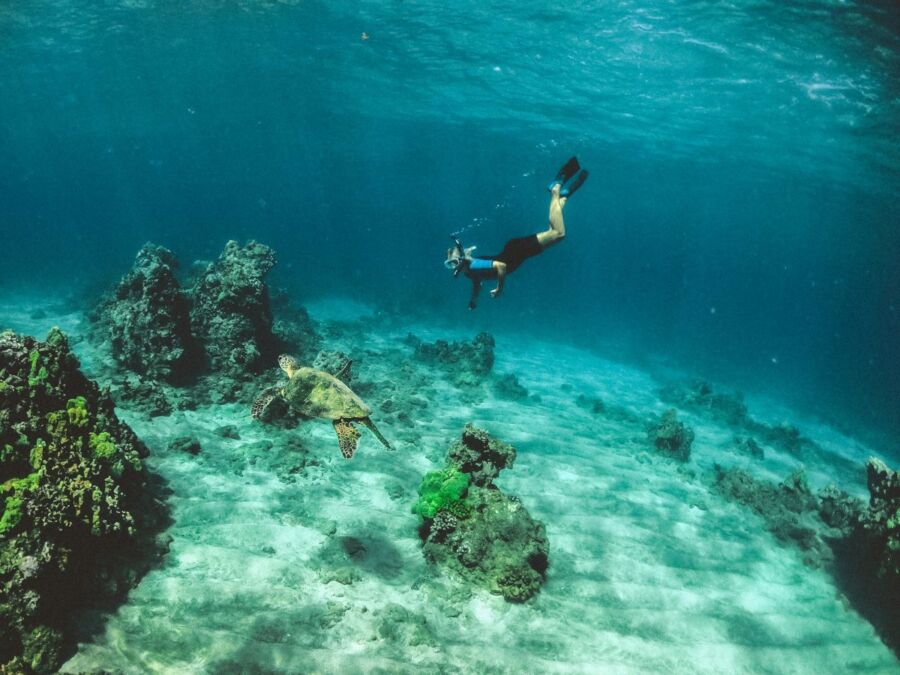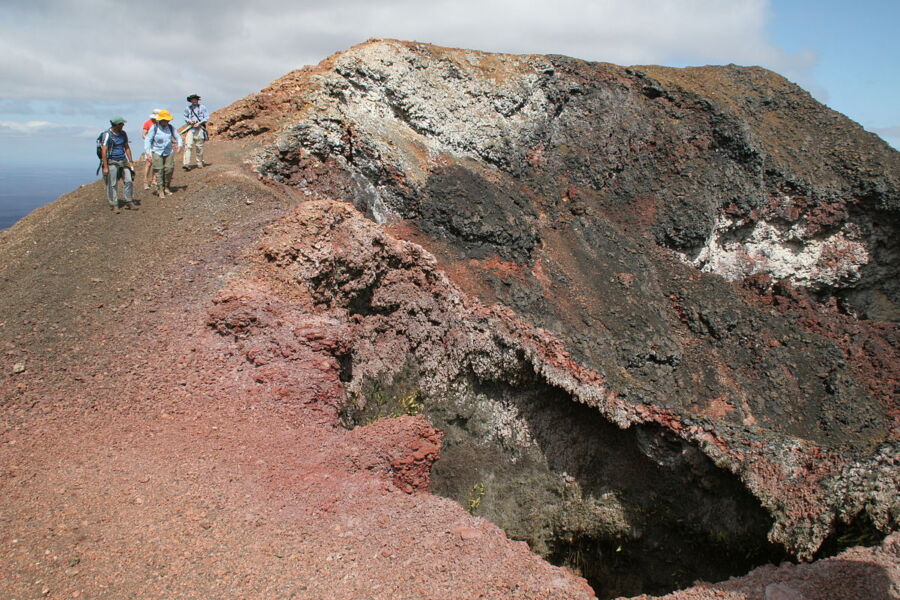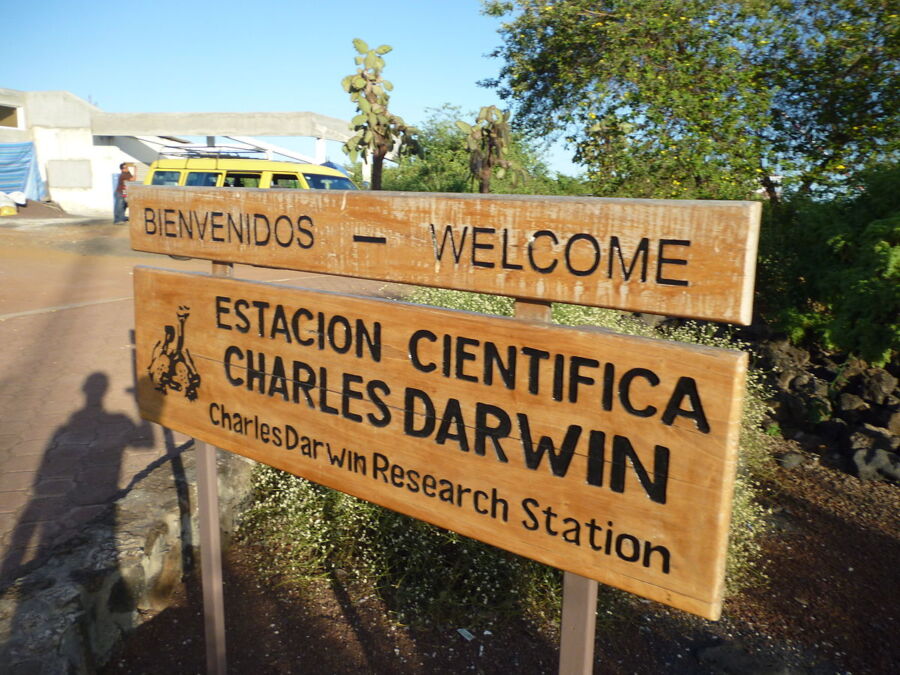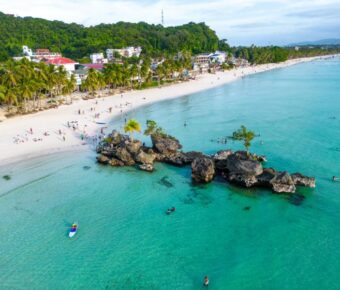
Galapagos Trip Cost: Unforgettable Adventure Under $3000
Planning a trip to the Galapagos Islands? Get ready for an adventure of a lifetime – but be prepared for the costs. These unique islands offer unparalleled wildlife experiences, but they come with a price tag. A week-long Galapagos trip typically costs each person between $3,000 to $10,000. The price depends on your travel style and choices.
You’ll find options for every budget, from budget-friendly island hopping to luxury cruises. Your biggest expenses will be flights, accommodation, and guided tours. But don’t let the costs scare you away – with some smart planning, you can make your Galapagos dream a reality.
Ready to start budgeting for your Galapagos adventure? Let’s break down the costs and help you plan an unforgettable trip that won’t break the bank.
Contents
- Key Takeaways
- Determining Your Budget
- Overall Expense Breakdown
- Cost of Different Travel Styles
- Getting to the Galapagos
- Airfare and Flight Costs
- Arrival Fees and Procedures
- Choosing Your Accommodations
- Cruise Ship Options
- Land-Based Accommodation Types
- Eco-Friendly Stays
- Exploring the Islands
- Galapagos National Park
- Tour Types and Costs
- Wildlife Watching Opportunities
- Activities and Excursions
- Water Activities
- Hiking and Land Exploration
- Cultural Experiences
- Timing Your Visit
- Best Seasons for Travel
- Off-Peak Advantages
- Sustainability and Conservation
- Understanding Park Conservation Fees
- Supporting Eco-Tourism
- Practical Tips for Travelers
- Packing Essentials
- Navigating the Islands
- Dining and Food Budget
- Finalizing Your Galapagos Trip
- Booking Tours and Cruises
- Travel Insurance and Safety
- Last-Minute Preparations
- More Travel Guides
Key Takeaways
- Trip costs range from $3,000 to $10,000 per person for a week
- Main expenses include flights, accommodation, and guided tours
- Smart planning can help make your Galapagos trip more affordable
Determining Your Budget
Planning a Galapagos trip requires careful budgeting. Your costs can vary widely based on your travel style and choices. Let’s break down the expenses and compare different options to help you plan.
Overall Expense Breakdown

A Galapagos adventure typically costs $500-$1000 per day. This includes:
- Flights to the islands: $400-$600 roundtrip from mainland Ecuador
- Park entry fee: $100 per person
- Accommodation: $50-$300+ per night
- Meals: $20-$50 per day
- Tours and activities: $50-$200+ per day
- Transport between islands: $30-$50 per ferry ride
Remember to factor in extras like tips, souvenirs, and travel insurance. Prices tend to be higher during peak season (June-August and December-January).
Cost of Different Travel Styles
Your travel style greatly impacts your budget. Here’s a quick comparison:
Budget travelers can expect to spend $1000-$1500 for a week-long trip. This means:
- Staying in basic hotels or hostels
- Eating at local spots
- Taking day tours instead of cruises
- Traveling between islands by public ferry
Mid-range trips cost about $2000-$3000 per week. You’ll enjoy:
- Comfortable hotels
- A mix of restaurants and local eateries
- Some guided tours and maybe a short cruise
Luxury trips start at $4000+ per week. This includes:
- High-end hotels or luxury cruise ships
- Gourmet meals
- Private guides and exclusive tours
You can save money by visiting in the low season, booking last-minute deals, or exploring on your own. But splurging on a good guide or cruise can really enhance your Galapagos experience.
Getting to the Galapagos

Traveling to the Galapagos Islands involves some unique costs and procedures. You’ll need to budget for flights and be prepared for special fees upon arrival.
Airfare and Flight Costs
Getting to the Galapagos isn’t cheap. Flights typically depart from Quito or Guayaquil in mainland Ecuador. Expect to pay between $400 and $600 for a round-trip ticket. Prices can jump during peak seasons like summer and holidays.
To save money, try to be flexible with your travel dates. Booking in advance can also help you snag better deals. KAYAK is a good place to start your flight search.
Keep in mind that flights to the Galapagos are often weight-restricted. Pack light to avoid extra baggage fees.
Arrival Fees and Procedures
When you land in the Galapagos, be ready to pay some extra fees. First, you’ll need a Transit Control Card. This costs $20 and helps manage tourism on the islands.
The big one is the Galapagos National Park entrance fee. For most visitors, it’s $100 per adult. Kids under 12 pay $50.
These fees are cash-only, so bring enough US dollars with you. Credit cards aren’t accepted.
You’ll also go through a quick bag inspection. They’re looking for things that could harm the islands’ ecosystem. Don’t worry – it’s usually pretty quick and painless.
Choosing Your Accommodations

Picking the right place to stay can make or break your Galapagos trip. Your choice impacts both your experience and your budget. Let’s look at some options to fit different needs and wallets.
Cruise Ship Options
Cruising the Galapagos gives you a chance to see multiple islands. Ships come in different sizes and styles. Smaller boats often cost less but may have fewer amenities. Larger ships offer more comfort but can be pricier.
Budget cruises start around $200 per person per day. Mid-range options run $400-$600 daily. Luxury cruises can top $1000 a day. Prices usually cover meals, guides, and activities.
Some cruise lines offer deals in the low season (June to November). You might save 20-30% if you’re flexible with dates. Book your Galapagos cruise early for the best prices and cabin choices.
Land-Based Accommodation Types
Staying on land can be cheaper than cruising. It also lets you set your own pace. The main towns of Puerto Ayora, Puerto Baquerizo Moreno, and Puerto Villamil have the most choices.
Budget hostels start at $20-$30 per night. Mid-range hotels run $80-$150. Luxury resorts can cost $300 or more. Prices tend to be higher on Santa Cruz Island due to its popularity.
Vacation rentals are another option. They’re good for families or groups. A two-bedroom apartment might cost $100-$200 per night. This can be a bargain if you split the cost.
Eco-Friendly Stays
The Galapagos is all about nature. Many visitors want to minimize their impact. Eco-lodges and sustainable hotels are growing in number.
These places often use solar power, collect rainwater, and support local communities. Prices vary widely. You might pay $150-$400 per night. Some eco-lodges are quite luxurious.
Camping is allowed on a few islands with a permit. It’s the cheapest option at about $10 per night. But you’ll need to bring your own gear and food.
Remember, the cheapest option isn’t always the best value. Factor in location, included meals, and activities when comparing prices. Your accommodation choice can greatly affect your overall Galapagos experience.
Exploring the Islands
The Galapagos Islands offer a unique adventure filled with incredible wildlife and stunning landscapes. You’ll find diverse experiences across the islands, from guided tours to up-close animal encounters.
Galapagos National Park

The Galapagos National Park covers 97% of the archipelago’s land area. You’ll need to pay a $100 entry fee to access the park. This fee helps protect the islands’ fragile ecosystems.
Most of your exploration will happen within the park’s boundaries. You can’t wander freely – you must stick to marked trails and visit only with certified guides. This ensures minimal impact on the environment.
Some popular sites include:
- Tortuga Bay on Santa Cruz
- The Wall of Tears on Isabela
- Kicker Rock near San Cristobal
These spots showcase the islands’ unique geology and wildlife. You might spot marine iguanas, giant tortoises, or blue-footed boobies.
Tour Types and Costs
You have several options for exploring the Galapagos:
- Cruises: $500-$1000 per day
- Land-based tours: $200-$500 per day
- DIY island-hopping: $50-$200 per day
Cruises are pricey but offer a comprehensive experience. You’ll visit multiple islands and remote spots.
Land tours are cheaper and let you stay on the main islands. You’ll take day trips to nearby sites.
DIY trips give you the most freedom but require more planning. You’ll arrange your own inter-island ferries and excursions.
No matter which option you choose, factor in extra costs like flights ($900 per person) and the park entry fee.
Wildlife Watching Opportunities

The Galapagos are famous for their unique animals. Many species are found nowhere else on Earth.
You’re almost guaranteed to see:
- Sea lions lounging on beaches
- Marine iguanas basking on rocks
- Giant tortoises in the highlands
With luck, you might spot:
- Galapagos penguins swimming near Isabela
- Flightless cormorants on Fernandina
- Waved albatrosses on Española (April to December)
The best wildlife viewing happens on guided tours. Knowledgeable naturalists help you spot and identify animals while teaching you about their behaviors and the islands’ ecology.
For the best experience, bring binoculars and a good camera. And remember – never approach or touch the wildlife!
Activities and Excursions
The Galapagos Islands offer a mix of thrilling adventures and unforgettable experiences. From underwater wonders to volcanic landscapes, you’ll find plenty to keep you busy. Let’s explore some of the top activities you can enjoy during your visit.
Water Activities

Snorkeling is a must-do in the Galapagos. You’ll swim alongside colorful fish, sea turtles, and maybe even playful sea lions. Rentals cost about $5-10 per day. For a more guided experience, book a snorkeling tour for around $50-100.
Kayaking is another great way to explore the coastline. Rental prices range from $30-50 for a half-day. You might spot marine iguanas sunbathing on the rocks or blue-footed boobies diving for fish.
If you’re feeling adventurous, try scuba diving. A two-tank dive typically costs $150-200. You’ll see sharks, rays, and maybe even hammerheads if you’re lucky.
Hiking and Land Exploration

The Sierra Negra volcano on Isabela Island offers an epic hike. It’s the second-largest crater in the world. Guided tours cost about $50-75 and include transportation and lunch.
For wildlife encounters, visit the Charles Darwin Research Station on Santa Cruz Island. Entry is free, but consider hiring a guide for about $20-30 to learn more about the giant tortoises and conservation efforts.
Don’t miss the lava tunnels on Santa Cruz. These underground passages were formed by ancient lava flows. Tours cost around $40-60 and often include a visit to a tortoise reserve.
Cultural Experiences
Take a cooking class to learn about local Ecuadorian cuisine. Prices range from $50-80 and usually include a market visit and meal.
Visit a local coffee farm on San Cristobal Island. Tours cost about $30-40 and include tastings of organic Galapagos coffee.
For a unique experience, join a night tour to see nocturnal animals. These guided excursions cost around $40-60 and often include stargazing.
Remember, most activities require a naturalist guide by law. This adds to the cost but ensures you have a safe, educational experience. Prices can vary based on the season and group size, so it’s best to check with tour operators for the most up-to-date rates.
Timing Your Visit
Planning when to visit the Galapagos can make a big difference in your trip costs and experience. The islands have distinct seasons that affect wildlife, weather, and prices.
Best Seasons for Travel
The Galapagos has two main seasons. From June to December, it’s cooler and drier. This is a great time to see active sea lions and nesting sea birds. Prices are higher, but the weather is nice for hiking and exploring. From January to May, it’s warmer and wetter. You’ll see green landscapes and lots of sea turtles nesting. Prices are a bit lower, but it can be muggy.
December to January and June to August are the busiest and priciest times. If you visit then, book early. Flights to the islands can cost $400-600 round trip from mainland Ecuador. Once there, expect to spend $200-500 per day on tours, food, and lodging.
Off-Peak Advantages
Visiting in the shoulder seasons of April-May or September-November can save you money. Prices for hotels and tours may drop 10-30%. You’ll also have fewer crowds at popular spots. The weather is still good, and you can see most wildlife year-round.
In the off-season, you might find flights for $300-400 and daily costs closer to $150-300. But some tours may not run as often. Be flexible with your plans. You can often get last-minute deals on cruises if you’re willing to wait and book in person in Puerto Ayora.
Sustainability and Conservation
Traveling to the Galapagos Islands comes with a responsibility to protect this unique ecosystem. Your trip costs include important fees that support conservation efforts and promote sustainable tourism practices.
Understanding Park Conservation Fees

When you visit the Galapagos, you’ll pay a national park entrance fee. This fee is $100 for adults and $50 for kids under 12. It might seem steep, but it’s crucial for protecting the islands. The money goes straight to conservation projects, like saving giant tortoises and blue-footed boobies.
You’ll also pay a $20 transit control card fee. This helps manage visitor numbers to prevent overtourism. These fees are just a small part of your total trip cost, but they make a big difference. They help keep the Galapagos pristine for future visitors and its unique wildlife.
Supporting Eco-Tourism
Choosing eco-friendly tours is a great way to travel responsibly in the Galapagos. Look for tour operators that follow sustainable practices. They might use solar power, recycle water, or hire local guides. These choices often cost a bit more, but they’re worth it.
Eco-tours usually have smaller groups, which means less impact on the environment. They also give you a chance to learn more about conservation efforts. You might even get to help with research projects or beach clean-ups.
Remember, every dollar you spend can support the local economy. Try to buy souvenirs from local artisans and eat at local restaurants. This helps island communities and reduces the need for imported goods.
Practical Tips for Travelers

Planning a trip to the Galapagos Islands can be tricky. Here are some useful tips to help you save money and make the most of your adventure.
Packing Essentials
Don’t forget your sunscreen and a good hat – the equatorial sun is no joke! Pack light, breathable clothes and a sturdy pair of walking shoes. Bring a reusable water bottle to stay hydrated and cut down on plastic waste. A small daypack is great for carrying snacks and gear on day trips.
Toss in some binoculars to spot wildlife from afar. And don’t forget your camera – you’ll want to capture those amazing memories! If you plan to snorkel, bring your own gear to avoid rental fees. A light rain jacket can come in handy for unexpected showers.
Island hopping in the Galapagos can be pricey, but there are ways to cut costs. Public speedboats between the main islands are much cheaper than flying. Book your car rental in advance for the best rates if you want to explore on your own.
Many sites are free to visit without a guide. Santa Cruz and San Cristobal have lots of DIY options. Walk or bike when possible to save on taxis. Consider booking day tours once you arrive – they’re often cheaper than pre-booking online.
Ask your hotel about free or low-cost activities nearby. Some beaches and trails don’t require a guide or entry fee.
Dining and Food Budget

Eating out for every meal adds up fast. Save money by staying at places with kitchens so you can cook some of your own meals. Local markets are great for fresh, cheap produce and seafood.
Try the set lunch menus called “almuerzos” at small local restaurants. They’re usually half the price of dinner and include a main, sides, and a drink. Street food like empanadas can be tasty and budget-friendly snacks.
Bring some granola bars or trail mix from home for quick energy boosts between meals. When dining out, skip the pricey bottled water and ask for tap water instead – it’s safe to drink on the inhabited islands.
Finalizing Your Galapagos Trip
Getting ready for your Galapagos adventure? Let’s make sure you’ve got all the important details sorted. From booking tours to packing essentials, here’s what you need to know before you go.
Booking Tours and Cruises
When it comes to Galapagos cruises, prices can vary a lot. You might pay anywhere from $500 to $1000 per day. That’s not cheap, but it includes your meals and guided trips. If you’re on a tighter budget, look into island hopping tours. These can cost between $200 and $500 daily.
Want to save even more? Try planning your own trip. You can get by on $50 to $200 a day, plus flight costs and entry fees. Just remember, you’ll need to arrange your own tours and transportation.
Book early to get the best deals, especially for cruises. Popular boats fill up fast!
Travel Insurance and Safety
Don’t skimp on travel insurance! The Galapagos are remote, and medical care can be pricey. A good policy will cover emergency evacuation, which could save you thousands if something goes wrong.
Pack a basic first aid kit with seasickness meds, sunscreen, and any personal medications. The sun is strong near the equator, so bring a hat and sunglasses too.
Stay safe by following your guide’s instructions, especially around wildlife. Don’t touch or feed the animals – it’s bad for them and could get you in trouble.
Last-Minute Preparations
Double-check your packing list. You’ll need quick-dry clothes, sturdy shoes for hiking, and a waterproof bag for boat trips. Don’t forget your camera and extra batteries!
Make copies of important documents like your passport and keep them separate from the originals. It’s a good idea to leave a copy with someone at home too.
Brush up on some basic Spanish phrases. Many tour guides speak English, but knowing a bit of the local language can be helpful and fun.
Lastly, bring enough cash for tips and small purchases. ATMs can be hard to find on the islands.



